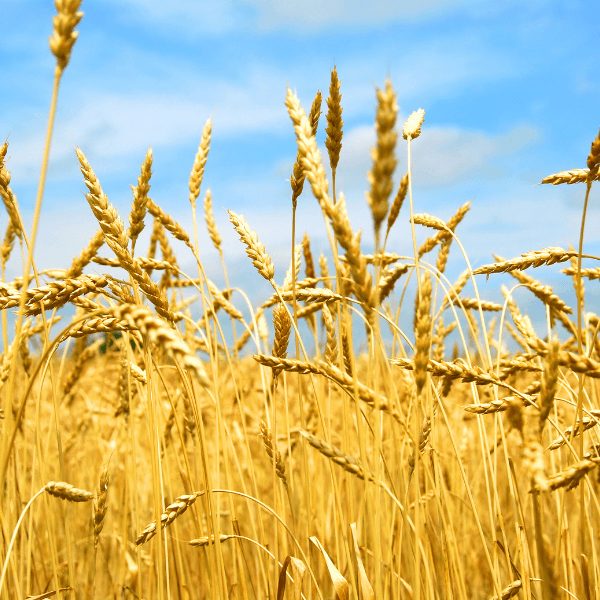The paddock to plate philosophy
As a country born and raised farmer’s daughter, and now agricultural writer, I see the absolute importance of our agricultural industry in Australia. What we put on our dinner plate is the result of hard work on the land – the paddock to plate philosophy. City folk (and not all let me add) rush about their daily commute to their city offices, ducking out to the trendy cafe and wine bar around the corner for lunch, then finishing the day with a delicious dinner at a city restaurant with a glass (or two).

But do they stop to think about how that delicious lamb shank got to their plate or how that wine in their glass was produced? I’ve worked in the city myself early in my career and have heard work colleagues undervalue the importance of farm life. It’s a tough full-time gig working a farm, and even more so when confronted with natural disasters like the recent floods on the East Coast of Australia.
Agrifood commodities
Agriculture is a huge industry in Australia. The Australian Bureau of Statistics (ABS) reported at the end of the 2021 financial year, that there was 387 million hectares of land used for agriculture here in Australia. This land included 332 million hectares for grazing and 32 million hectares for cropping. During the 2021 financial year there was 26 million hectares of cereal and broadacre crops planted.
You think about what goes in your salad roll or on your plate at night. Much of it comes from agriculture. From the margarine or butter, to the breadroll, and the meat and salad in between – it’s all from the farm. The apple or mandarin we eat to keep us going through the afternoon – it’s all from the orchard. That glass of wine at night – it’s all from the vineyard.
The livestock, dairy, wheat, fruit and vegetables, poultry and grains commodities, contribute approximately 90% to agricultural production in Australia.

Livestock
The livestock and dairy commodities provide our beef, our lamb and our milk. Without these commodities existing in Australia, we would be reliant on imports. No Riverina angus steaks, no prime Tasmanian lamb, and not even that carton of Devondale milk. And of course, fresh and local is best!
During years of drought, livestock producers find themselves having to destock due to the lack of feed and water. Over the last year the seasons have been favourable to the farmers. Pasture production has increased, creating an abundant supply of fodder and we have seen increased rains filling dams. This has meant that farmers have been able to restock and build their cattle herds and sheep flocks.
The price of what we put on our plate is driven by seasonal changes and natural disasters. Next time the country is experiencing widespread drought and the price of beef and lamb is through the roof due to low supply, have a think about the farmer – the person that works the land to deliver your food.
The livestock industry plays a big part in the food train, not only on our plates but also on those plates abroad. It is a significant contributor to the Australian economy. MLA (Meat and Livestock Australia) reported in September 2021, that the livestock industry would generate $33.5 billion in economic output for the last financial year, equating to 46% of all agricultural economic output.

Poultry

Chicken, turkey, duck – all part of that food train. People love a good tender chicken schnitzel – it’s a classic pub favourite here in Australia. And without chickens, there are no eggs – no eggs benedict or passionfruit sponge cake.
There has been an increase in the consumer demand for chicken and eggs over the past year. As a result, the ABS have reported that the poultry flock in Australia has increased by 10%.
Fruit and vegetables
What would we do without our fresh fruit and vegetables. It has been difficult of recent to find fresh produce in our supermarkets. How often do you go to the supermarket to find there is no broccoli, no lettuce, no bananas and even at one point a limited supply of potatoes? We are talking staple items in our trolleys. This is quite often the result of natural disasters leading to limited supply.
A few years ago, the banana crops were wiped out due to cyclones in North Queensland. Now we are going to be faced with limited peaches, apricots and pears, as fruit orchards in the Goulburn Valley have been inundated with the Victorian floods. 90% of Australian pears are grown in the Goulburn Valley.
Many take for granted that those staple items will be on the supermarket shelves. Meanwhile farmers are relying on a great harvest to make a living. All the hard work leading up to the harvest can be gone in one storm. That could be a year’s income for a farmer.

Grains

Cereal and broad acre cropping is another huge commodity contributing to our food train. Our Uncle Tobys oats drizzled with honey (made by bees). Our Sanitarium weet-bix sprinkled with sugar (from sugar cane). Even the canola oil used in the margarine for our toast. It all originates from the land.
The ABS reports that there has been an increase in availability of water for irrigation, which has grown the rice production. What would we do without rice! And the number of wheat crops being planted over the past year or two have also grown. This boosts supply of the key ingredient to one of our biggest pantry staple items – bread.
Agricultural businesses
The farmers maybe the backbone to our food train, however there are many other agricultural businesses involved in keeping our food train going. Fertilisers for the crops, stock feed, livestock agents, agri-finance companies and farm insurance agencies to name a few. These businesses exist because of the farmers demand for their supplies and services. Without them, the farmers wouldn’t be able to produce the food we put on our plates.
Farm innovation companies are also helping the food train. Austrade has reported that “Australia is creating and implementing agtech and foodtech solutions that enable farmers and food producers to manage key challenges. These include increasing production while managing scarce resources and responding to ever-changing consumer demand for food that is healthy, convenient and traceable”.

Agricultural exports
The food train doesn’t just stop here on our plates. Australia is well-known as a world leading producer of agricultural products and exports around 72% of total agricultural production. Our biggest export market is Asia, predominantly China.
According to Austrade, “Australian farmers are innovative and have adopted new technologies and practices to drive consistent productivity growth and respond to a sometimes challenging physical environment.” Drought-resistant crops, robust irrigation systems and yield prediction technology are a few examples.

Source: Snapshot of Australian Agriculture 2022 – DAFF
Note: Share of agricultural production exported by sector, 3-year average, 2017–18 to 2019–20.
National Agriculture Day - AgDay
Friday 18th November is National Agriculture Day here in Australia, a day dedicated to Australian agriculture. It’s also a day to celebrate and learn about the food and fibre grown at our back door. Time to reflect on the work that farmers and agricultural businesses do to keep our bellies happy.
Over to you
Have you got an agrifood story to share? Would love to hear it.
I’m an agricultural writer and can help get your words out to help your agricultural business keep our food train alive. If you would like more information, please send an email to crystal@crystallobbancreative.com.au or fill in the contact form here.
